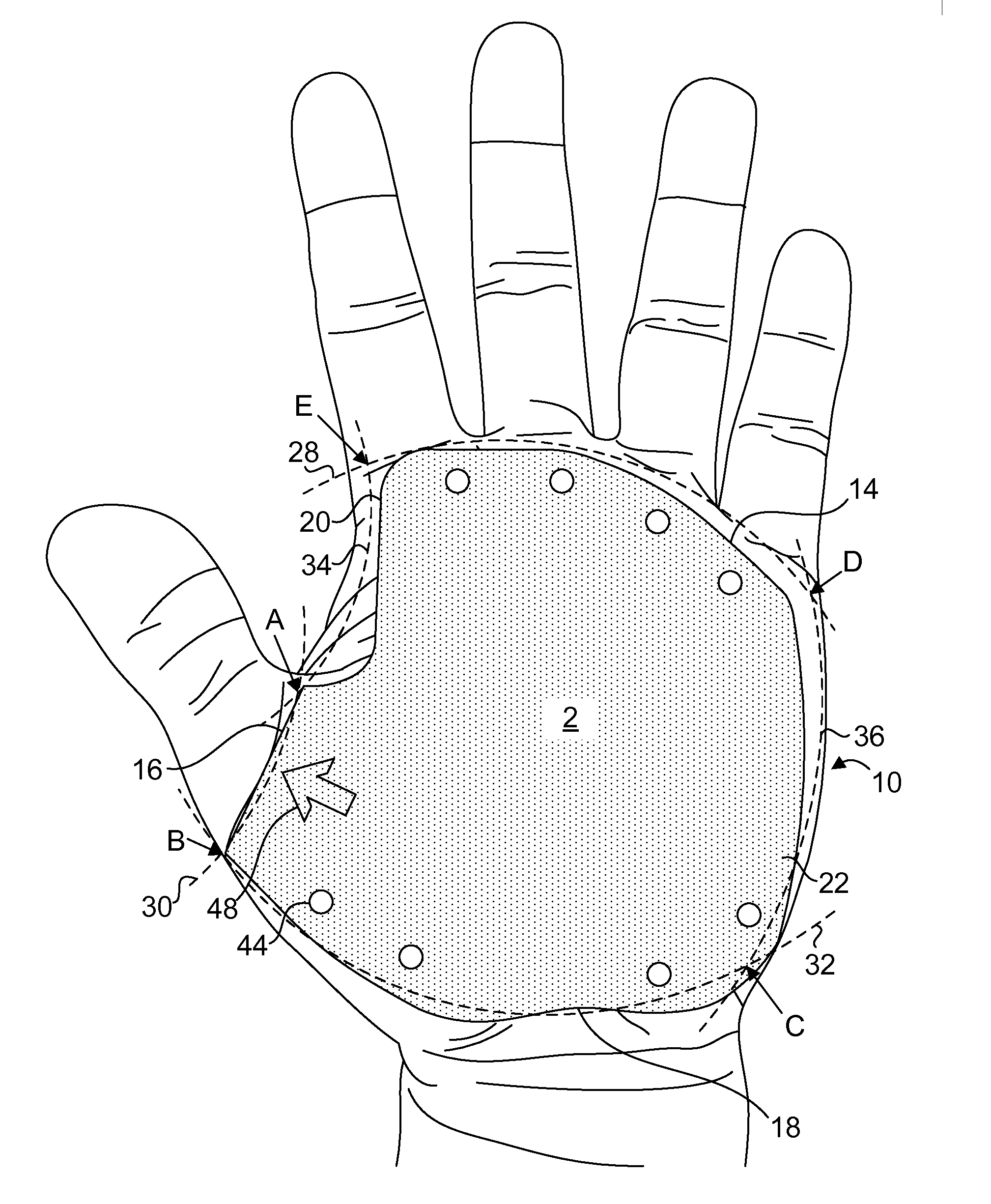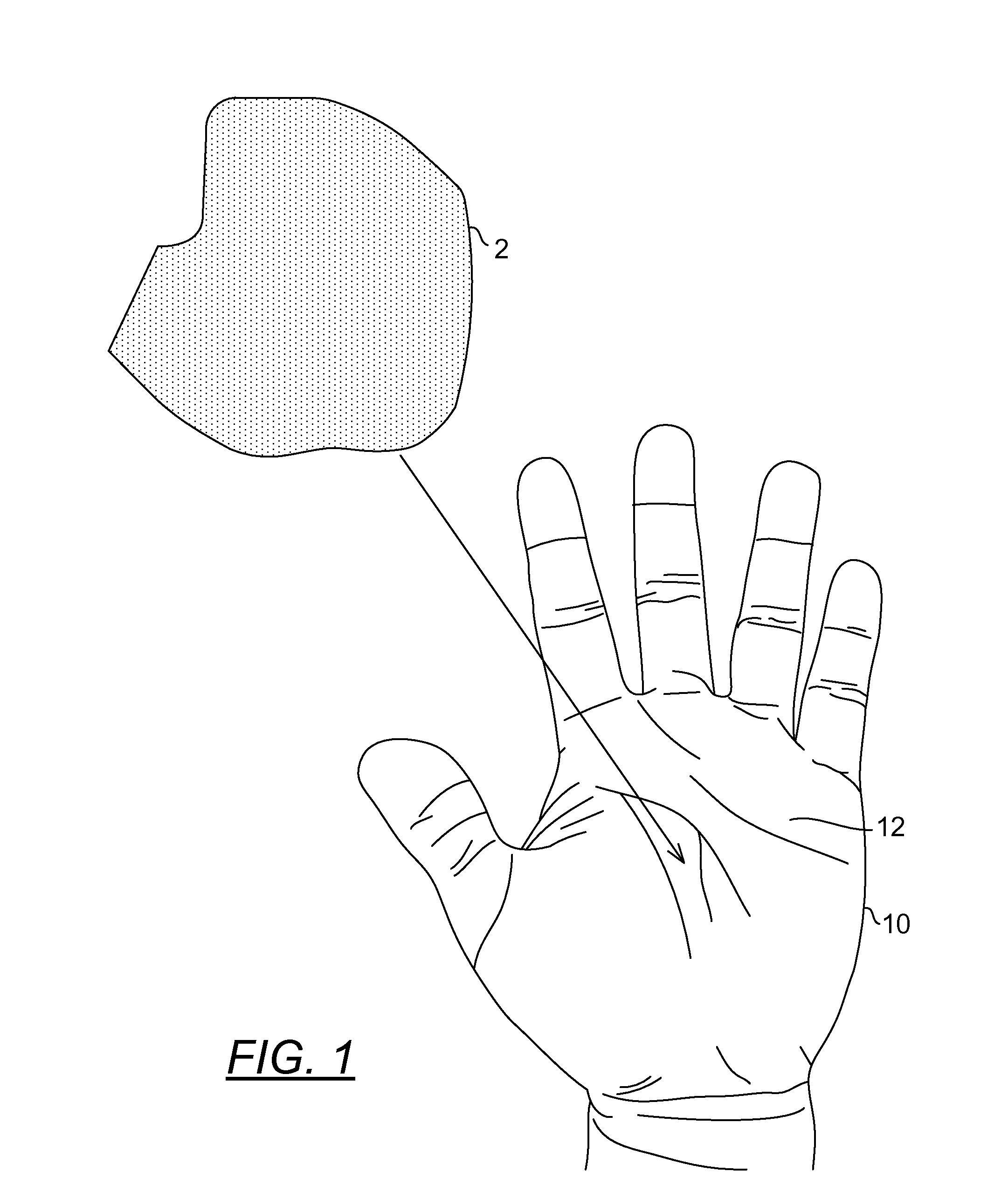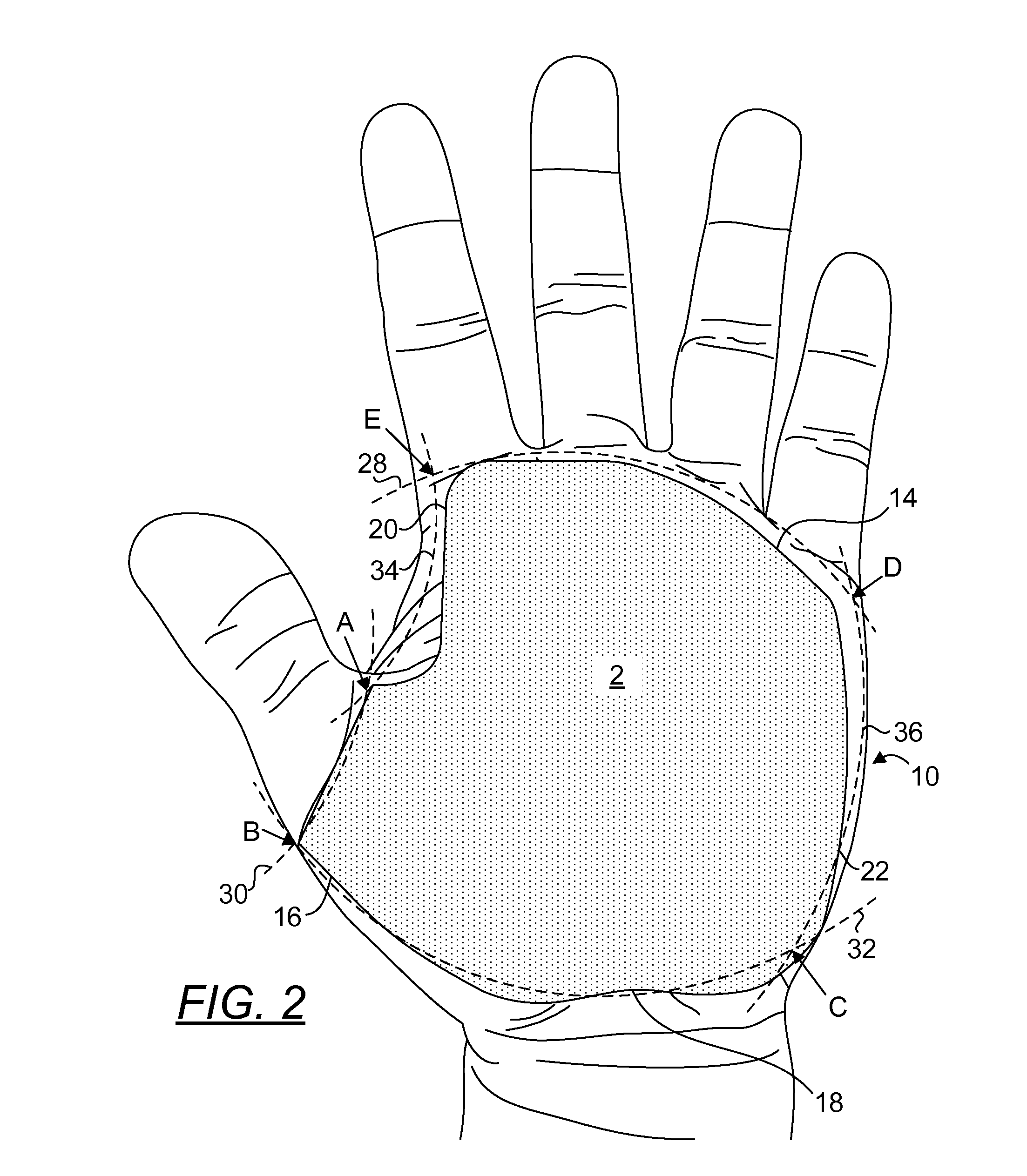Minimal glove capable of direct and removable adherence to a palm
- Summary
- Abstract
- Description
- Claims
- Application Information
AI Technical Summary
Benefits of technology
Problems solved by technology
Method used
Image
Examples
Embodiment Construction
[0055]The term “about” is used herein to mean approximately, roughly, around, or in the region of. When the term “about” is used in conjunction with a numerical range, it modifies that range by extending the boundaries above and below the numerical values set forth. In general, the term “about” is used herein to modify a numerical value above and below the stated value by a variance of 20 percent up or down (higher or lower). FIG. 1 is a top orthogonal view of a present palm glove 2 arranged to be secured to the palm 12 of a left hand 10. FIG. 2 is a top orthogonal view of a present palm glove 2 having been secured to the palm 12 of a left hand 10. A similarly configured glove can be used for a right hand. The glove 2 is configured to cover substantially the entire surface of the palm 12 without affecting the dexterity of the hand 10. The thumb edge 16 of the glove 2 terminates at about the thumb area 30 of the hand 10. The dorsal edge 20 of the glove 2 terminates at about the dorsa...
PUM
 Login to View More
Login to View More Abstract
Description
Claims
Application Information
 Login to View More
Login to View More - R&D
- Intellectual Property
- Life Sciences
- Materials
- Tech Scout
- Unparalleled Data Quality
- Higher Quality Content
- 60% Fewer Hallucinations
Browse by: Latest US Patents, China's latest patents, Technical Efficacy Thesaurus, Application Domain, Technology Topic, Popular Technical Reports.
© 2025 PatSnap. All rights reserved.Legal|Privacy policy|Modern Slavery Act Transparency Statement|Sitemap|About US| Contact US: help@patsnap.com



